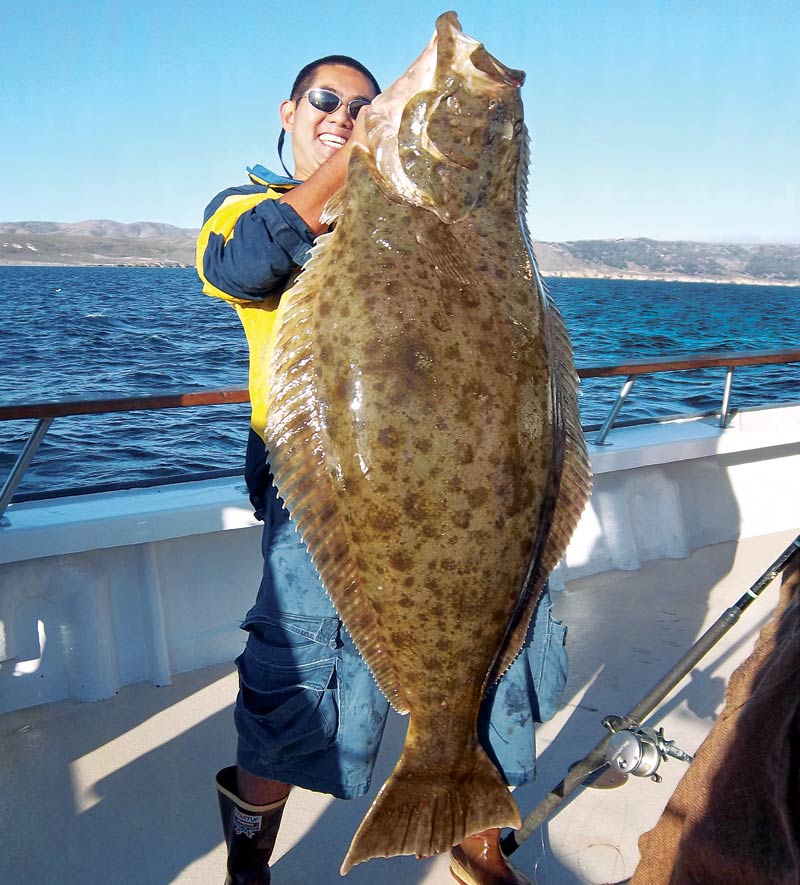
Last season, anglers working the waters off the Channel Islands landed an extraordinary number of immense California halibut, capped by a new International Game Fish Association all-tackle world record for this species: a breathtaking 67.5-pounder caught by Frank Rivera near Santa Rosa Island in July. It smashed the previous all-tackle record by nearly 9 pounds.
Yet that fish was just one among hundreds of halibut over 30 pounds caught off the Channel Islands from May through August last year, says Joe Villareal, captain of the Mirage, based in Channel Islands Harbor, in Oxnard.
“Very seldom did we see halibut less than 20 pounds,” he says. “Last year we caught 135 halibut. Most were over 25, and a lot were over 40 pounds. We are in a good cycle.”
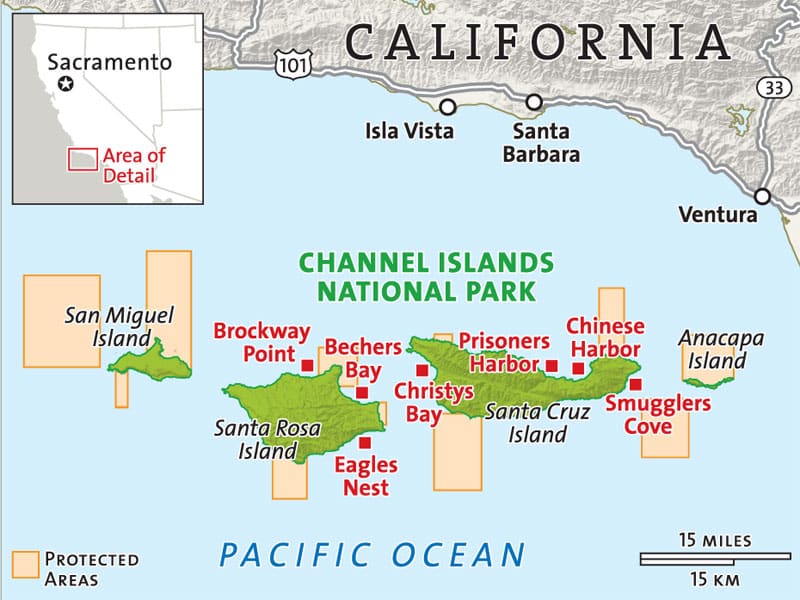
Mike Thompson, manager of Ventura Sportfishing, in Ventura Harbor, is in full agreement. He reports that his landing posted exceptional numbers of California halibut well above the customary size from May through July.
Thompson himself had his best day ever on halibut last June, landing a limit of five fish, none of which were under 30 pounds. There were 67 halibut caught on the boat the same day. Thompson’s personal best was 42 pounds.
“Of course, last year, anglers were scoffing at 40-pounders,” he points out. “Anything less than 50 pounds hardly raised an eyebrow.”
Will lightning strike twice in 2012? Pat Cavanaugh, captain of the Pacific Dawn, says the answer is yes — the big-’but phenomenon has been building for years, and he expects it to continue. He credits it to a perfect storm of two colliding annual migrations: one of halibut and another of market (opalescent) squid.
“There have been so many spawning squid the past few springs,” says Cavanaugh. “The halibut have been showing up at the islands about the same time to spawn, and with so much easy food around, they also take the opportunity to bulk up. They grow bigger each year.
“The best part is that this is taking place off two of the islands at once, Santa Cruz and Santa Rosa.”
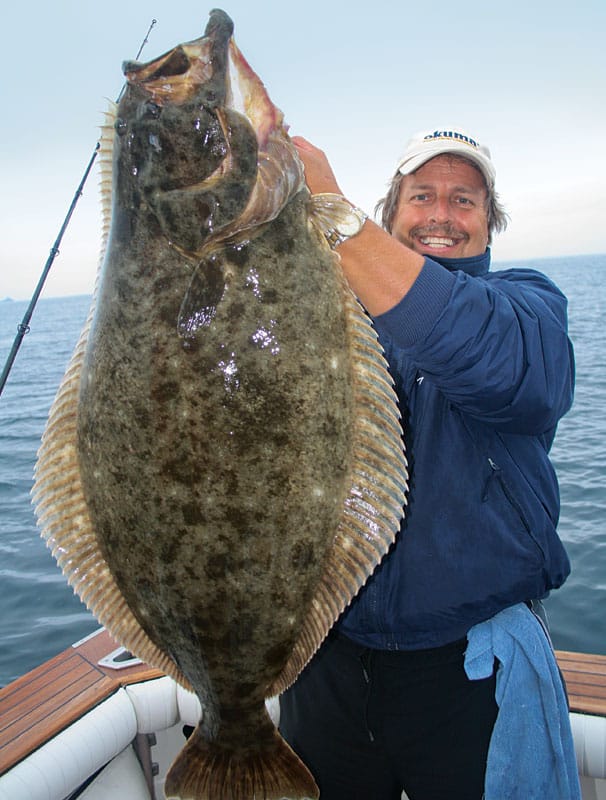
Finding the Fish
Interestingly, most boats don’t target halibut on the squid grounds, at least not initially. “Most of the early-season halibut we catch are incidental to white seabass fishing,” says Cava-naugh. However, once the halibut fishing becomes consistent, both passenger and private boats begin focusing on them.
“We find halibut feeding in the same areas as white seabass, on the squid grounds, sand- and mud-bottom spawning areas in 70 to 110 feet of water off the islands,” Cavanaugh reveals. Some of the traditional squid spawning areas include Eagles Nest, on the southeast corner of Santa Rosa, and Christys Bay, on the west end of Santa Cruz.
However, the all-time hot spot for big California halibut (not to be confused with the Pacific halibut common to Alaska waters) is definitely the squid grounds at Bechers Bay, on the northeast corner of Santa Rosa Island, says Villareal. “This is where Frank Rivera caught the world record last year,” says the Mirage captain. “And this is where the previous two world records were caught too.”
To find productive squid grounds, skippers like Villareal and Cavanaugh use fish finders to locate “nests” of squid eggs at night. These egg beds tend to show up as light-blue fuzz on the screen. Schools of squid will also show up on fish-finder displays, often in light blue.
Once a skipper is over a productive squid nest, he’ll drop anchor. Turning on bright lights at night will often bring the squid to surface, where the crew can capture them with brail nets and crowder nets.
While fishing often starts before daylight, halibut don’t bite often in the dark. However, as gray light begins to illuminate the surface of the ocean and the landscape of the islands, some of the best halibut fishing can occur, though moving water also plays into the equation. Halibut are definitely tide biters, and the best action happens when there is a decent current sweeping across the squid grounds.
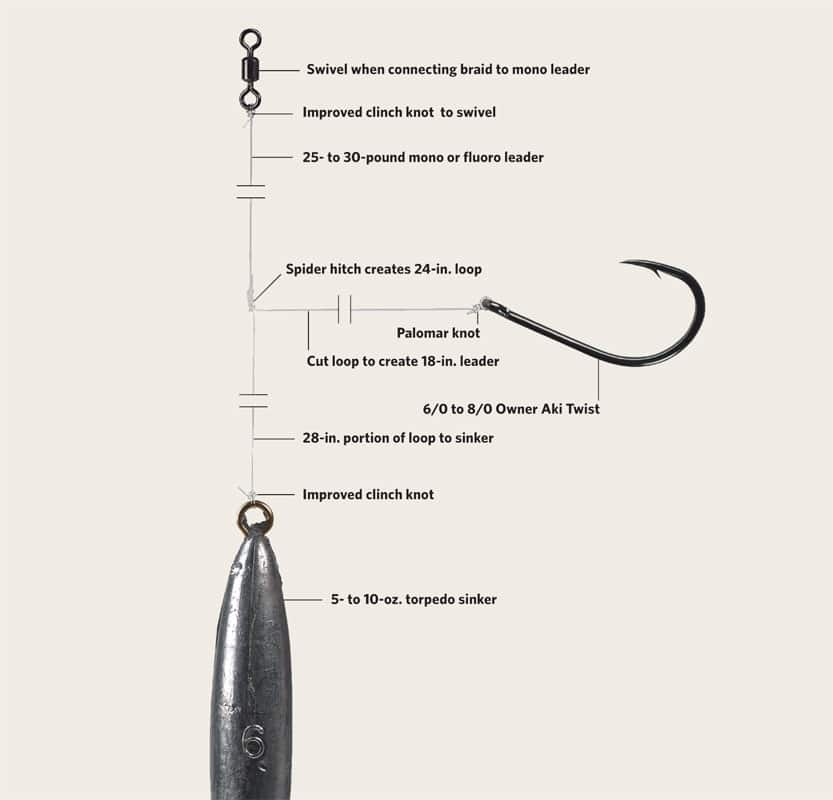
Halibut Techniques
While a fair number of halibut are caught by anglers seeking white seabass in deep water, different tactics are more productive when targeting halibut, says Thompson.
“When the boat is anchored, you can’t cover much ground fishing vertically with a dropper,” he explains. “So I like a white 1½- to 2-ounce Spro or High Tide B-52 bucktail or banana-jig head with a live squid.
“I make long casts around the boat — fan-casting from the corners — and work the jig-and-squid rig back, hopping it along the bottom. Most often, the bite occurs as the squid is falling after you hop it.”
Pacific Dawn skipper Cavanaugh agrees on this technique, which he calls pumping the bait back to the boat, but emphasizes the need to make long casts. He also recommends a slightly different lead-head setup. “Fish with a 2½-ounce lead-head, and pin on two live squid,” he advises.
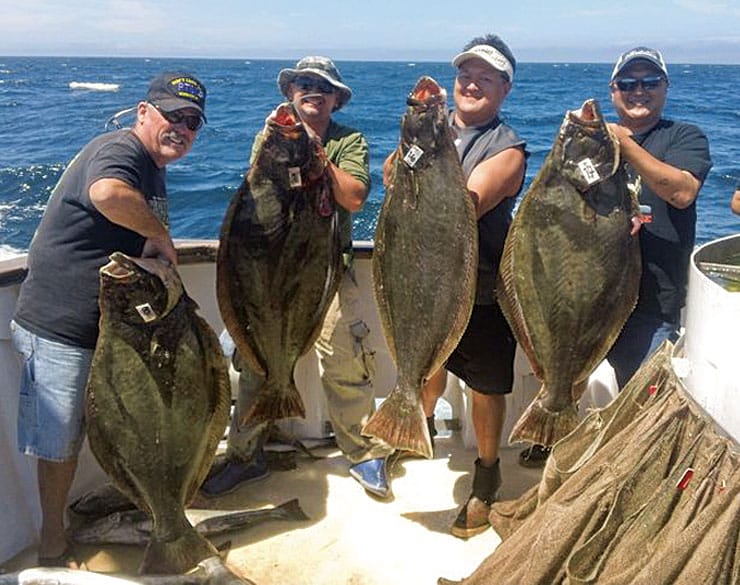
Drift-Fishing
When the focus switches to halibut, some skippers like to drift-fish to cover more ground. While halibut will aggressively chase prey at times, they more often lie in ambush on the bottom, moving no more than a body length to intercept and inhale a bait. Drifting puts the bait in front of more halibut. At the height of the season, about half of the fish are caught while drift-fishing, says Thompson.
While Cavanaugh often drifts in shallower water — around 24 feet deep — close to the islands, drifting the squid grounds in deeper water usually produces bigger fish. “We will catch fish up to about 25 pounds close to the beach, but we find halibut twice that size out deeper,” he says.
Fighting a Flatty
Most California halibut are hooked over featureless bottom, and the fish themselves don’t make long runs, though they are known to uncork short bursts of speed during a fight.
More characteristically, they may suck themselves into the sand after inhaling the bait or use the current against their broad flanks to resist capture. They can also swim backward and may shake their gaping, toothy maw violently.
Fighting a flatty is a balancing act between maintaining even pressure and not crowding the fish too much, says Cavanaugh. Use a relatively light drag to let the halibut make a run if it wants to. Don’t pump. It will make the fish want to shake its head, and with so many sharp teeth, it can saw through the line.
If you do it right, the fish won’t even realize it is near the surface and may even come up vertically and virtually motionless. Don’t lift the fish above the surface, or it may panic and start to thrash about. This is why a loose drag is critical. As the fish nears the surface, have crew standing by with a gaff to take the fish. Once it’s aboard, laying it white side up will help keep it from getting too wild.
Southern California anglers have their fingers crossed for another record-setting season on halibut in the waters off the Channel Islands. Focus on the squid grounds, and you might be successful on even bigger ’buts this year.
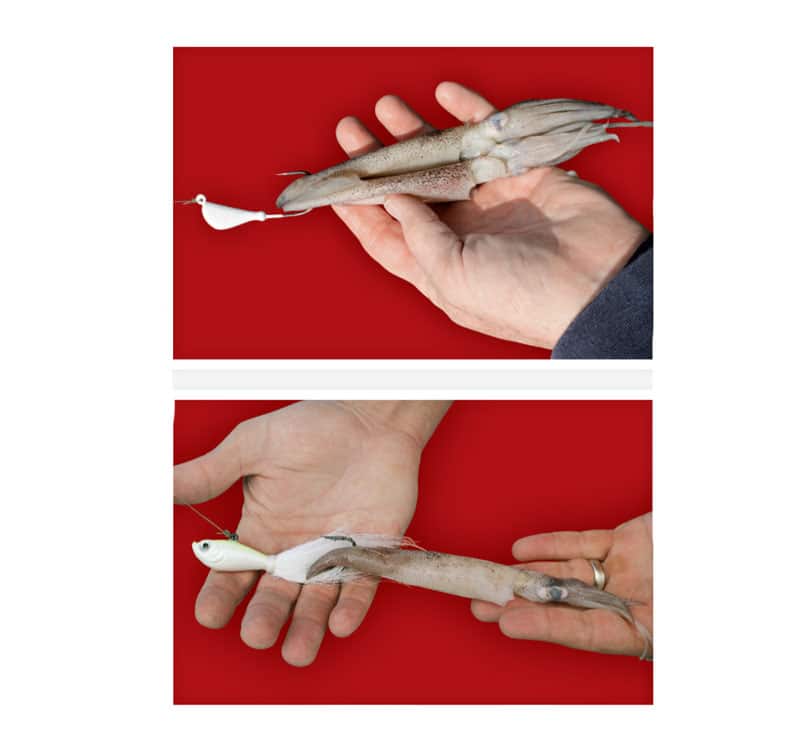
Trip Planner
What: Big California halibut.
When: May through July.
Where: Squid spawning grounds off Santa Cruz, Santa Rosa and San Miguel islands (outside the marine protected areas).
Cavanaugh and Thompson prefer different setups. Thompson likes an 8-foot Calstar 196-8 rod with light monofilament line, 15- to 20-pound-test. Cavanaugh, on the other hand, recommends a 9- to 10-foot rod with 50-pound braided line. A small lever-drag reel such as the Avet SX works well, says Thompson.
Both agree that the bite from a halibut is subtle, and that’s Cavanaugh’s rationale for using braided line. “You can feel the fish slurp down a squid even at the end of a long cast,” he explains. Thompson says experience has taught him to recognize the slight bump of a halibut bite even when he’s fishing with monofilament.
Rods: 8- to 10-foot medium-action rods.
Reels: Lever-drag reels, such as the Avet SX or Okuma Cedros 10S.
Lines: 50-pound-test coated braid or 15- to 20-pound-test monofilament.
Baits and Rigs: Live or fresh-dead opalescent squid, fished one or two at a time on a hook.
Terminal Rigs: Lead-heads, 11⁄2 to 21⁄2 ounces, and dropper loops with 6/0 to 8/0 Owner Aki Twist hooks and 5- to 10-ounce torpedo sinkers.









